When it comes to car maintenance, changing the differential fluid is often overlooked. However, it is an essential part of keeping your car running smoothly.
Differential fluid is responsible for lubricating the gears in your car’s differential, which transfers power from the transmission to the wheels. Over time, the fluid can become contaminated with dirt and debris, causing it to lose its effectiveness.
If the differential fluid is not changed regularly, it can lead to serious problems. The frictions of the differential components can increase, causing overheating and spoiling the differential.
This can result in costly repairs and even complete failure of the differential, which can be dangerous while driving. It is recommended that the differential fluid is changed every 30,000 to 60,000 miles, depending on the manufacturer’s recommendations in the owner’s manual or service manual.
Changing the differential fluid is not an easy task, and it is recommended that it is done by a local mechanic or dealership. The process involves lifting the car with the help of a jack, locating the front or rear differential, and removing the drain plug to drain the old fluid into a catch pan.
Afterward, the fill plug is removed, and the differential is filled with new gear oil or synthetic gear oil with the recommended viscosity. It can be a messy and time-consuming process, but the benefits of changing the differential fluid outweigh the cost and effort. Keep reading!
What is Differential Fluid?
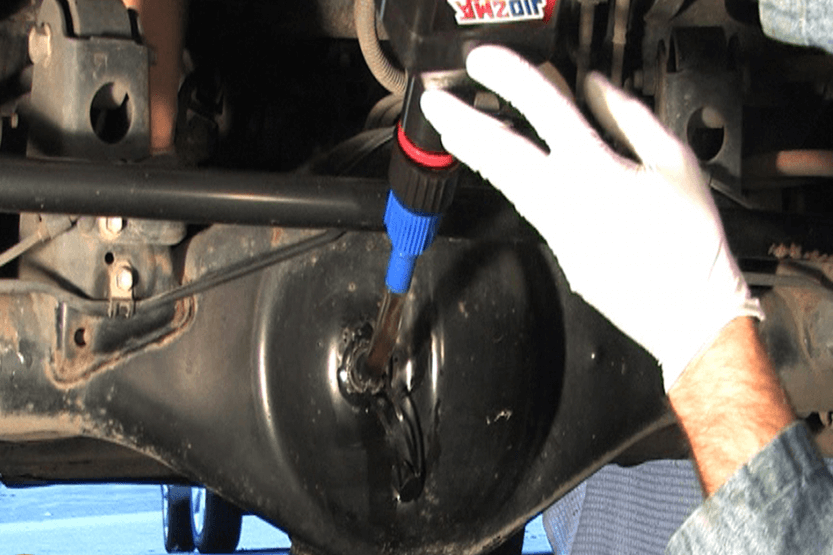
Differential fluid, also known as gear oil or differential oil, is a lubricant used in the differential of a vehicle.
According to Motors on the Move, the differential is located on the car’s rear axle. It helps to distribute power from the engine to the wheels. It is located between the drive wheels, and it allows them to turn at different speeds while still receiving power from the engine.
Differential fluid is designed to provide lubrication to the gears inside the differential. Without proper lubrication, the gears can grind against each other, causing damage and wear. Differential fluid also helps to reduce friction between the gears, which can cause them to overheat and fail.
Over time, differential fluid can become contaminated with dirt and debris. This can cause the fluid to lose its ability to lubricate the gears properly, leading to increased wear and tear. It can also cause the gears to slip, which can result in a loss of power to the wheels.
If differential fluid is not changed regularly, it can also cause noise and a burning smell. This is because the old fluid can become thick and sticky, making it difficult for the gears to move smoothly.
Changing differential fluid is an easy maintenance task that can be performed by most car owners. The process involves removing the drain plug, draining the old fluid, and then refilling the differential with fresh fluid. Some vehicles may require the removal of the differential cover to access the fluid.
Overall, changing differential fluid is an important part of vehicle maintenance that can help to ensure the longevity and performance of the differential.
Why Change Your Car’s Differential Fluid?
Changing your car’s differential fluid is an essential maintenance task that should not be overlooked. Differential fluid helps to control the speed of a vehicle by offering some resistance to moving parts, and it is crucial for the proper functioning of the differential system.
Over time, differential fluid can become contaminated with dirt, debris, and water, causing it to lose its ability to lubricate the gears and bearings properly. As a result, the friction of the differential components increases, leading to overheating and potential damage to the differential.
The owner’s manual of your car will provide you with the recommended interval for a differential fluid change.
Typically, according to MotorBiscuit, cars need a regular differential service anywhere from 30,000 to 60,000 miles. However, if you frequently drive in harsh conditions, such as towing or off-roading, you may need to change the fluid more frequently.
A differential fluid change is a messy job that involves draining the old fluid and replacing it with fresh fluid. It is best to have the work done by a local mechanic or dealership, as they have the expertise and equipment to do the job correctly.
However, if you are comfortable working on your car, you can do the job yourself with the help of some tools, such as jack stands, a catch pan, and a fill plug wrench.
When changing the differential fluid, it is crucial to use the right type of fluid for your vehicle. The manufacturer will recommend the proper viscosity and type of differential fluid for your car, such as synthetic gear oil.
Using the wrong type of fluid can cause damage to the differential and lead to expensive repairs.
In addition to regular differential fluid changes, it is also essential to inspect the differential system for wear and tear.
Some signs of a worn-out differential include whining noises, limited-slip, and metal-to-metal contact. If you notice any of these signs, it is best to have the differential system inspected by a professional.
In conclusion, changing your car’s differential fluid is an essential maintenance task that should not be overlooked. It helps to keep the differential system functioning correctly, prevents overheating, and potential damage to the differential.
Amsoil suggests that you follow the manufacturer’s recommendations for the proper interval and type of differential fluid for your car.
How to Change Differential Fluid
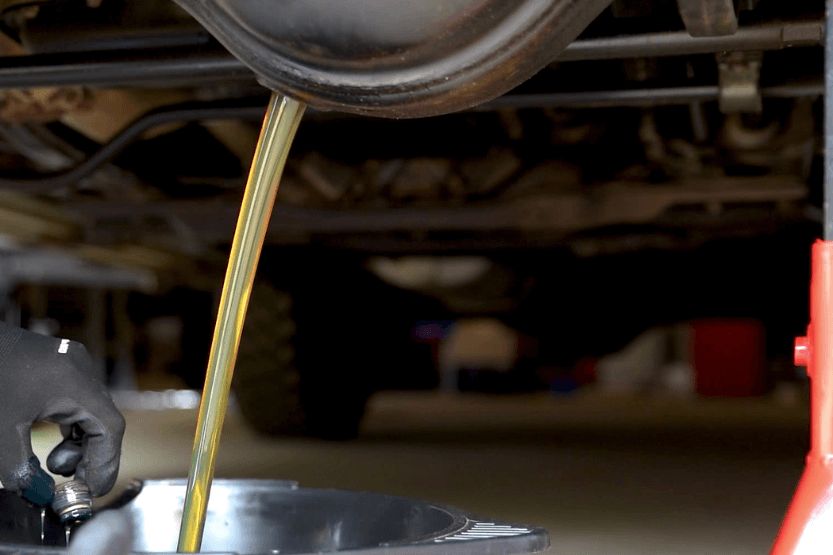
Changing your car’s differential fluid is an important maintenance task that should not be overlooked. It can help prevent wear and tear on your gears, reduce noise and slip, and provide proper lubrication for your differential.
If you’re changing the differential fluid yourself, Mobil suggests that you prepare yourself for the rotten egg smell. Wear old clothes which you can throw away as this process could get messy.
Here are the steps to change your car’s differential fluid:
Step 1: Prepare Your Car
Before you begin, make sure you have the necessary tools and supplies. You will need a jack and jack stands, a catch pan, a socket wrench, and the correct differential fluid for your car. Consult your owner’s manual or contact your car’s manufacturer to determine the correct type of fluid.
Next, locate your car’s differential and position your jack stands securely under the car. Use your jack to raise the car off the ground, making sure it is stable and secure.
Step 2: Drain the Old Fluid
Locate the differential drain plug and use your socket wrench to remove it. Allow the old fluid to drain into the catch pan. This can be a messy job, so be prepared with rags or towels.
Step 3: Remove the Housing Cover
Once all the old fluid has drained, remove the housing cover to access the gears. Inspect the gears for any signs of wear or damage. If you notice any issues, contact a local mechanic or dealership for further assistance.
Step 4: Inspect the Gears
Inspect the gears for any signs of wear or damage. If you notice any issues, contact a local mechanic or dealership for further assistance.
Step 5: Refill with New Fluid
Refill the differential with the correct amount of new differential fluid. Use a funnel to avoid spills and overfilling. Make sure to tighten the fill plug securely.
Step 6: Test Your Car
Lower your car back down to the ground and take it for a test drive. Listen for any unusual noises or whining sounds that could indicate a problem with your differential. If everything sounds good, then you have successfully changed your car’s differential fluid!
Remember to change your car’s differential fluid every 30,000 to 60,000 miles, or as recommended by your car’s manufacturer. This can help prevent overheating, reduce friction, and provide proper lubrication for your gears.
When to Change Differential Fluid

Regular maintenance of a vehicle’s differential fluid is essential for optimal performance. The differential fluid lubricates the gears and bearings that transfer power from the engine to the wheels.
Over time, the fluid can break down, become contaminated, or lose its effectiveness. Here are some indicators that it’s time to change the differential fluid:
- Strange noises: If you hear grinding or whining noises coming from your vehicle’s rear end, it could be a sign of low differential fluid. The gears in the differential may be grinding against each other due to a lack of lubrication.
- Burning smell: A burning smell coming from the rear of your vehicle could indicate contaminated differential fluid. Over time, the fluid can break down and lose its effectiveness. This can cause friction and heat, resulting in a burning smell.
- Low differential fluid: If you notice that the differential fluid level is low, it’s time to change it. A low level of fluid can cause the gears to grind and wear out faster.
Most manufacturers recommend changing the rear differential fluid every 30,000 to 60,000 miles, depending on the make and model of the vehicle. However, it’s important to check the owner’s manual for specific recommendations.
Changing the differential fluid is a straightforward process that can be done by a mechanic or a DIYer. The process involves draining the old fluid and filling the differential with new fluid. A hand pump can be used to fill the differential if there is no fill hole.
In conclusion, regular maintenance of the differential fluid is essential for optimal performance. If you notice strange noises or a burning smell, or if the differential fluid level is low, it’s time to change the fluid.
Most manufacturers recommend changing the rear differential fluid every 30,000 to 60,000 miles.
Benefits of Changing Differential Fluid

Regularly changing the differential fluid in a vehicle can have several benefits. Here are some of the benefits:
Better Lubrication
Differential fluid is responsible for lubricating the gears and bearings in the differential, which helps them move smoothly and prevents wear and tear.
Over time, differential fluid can become dirty and burnt, which reduces its ability to lubricate. Regularly changing the fluid ensures that it stays clean and effective, which can help extend the life of the differential and other components.
Improved Maintenance
Regularly changing the differential fluid is an important part of routine maintenance for a vehicle. By keeping the fluid clean and effective, it can help prevent problems down the road and reduce the need for costly repairs.
It also allows mechanics to inspect the differential and other components for any signs of wear or damage.
Protects Axles and Wheel Bearings
The differential is responsible for transferring power from the engine to the wheels, and it does so through the axles and wheel bearings.
Dirty or ineffective differential fluid can cause these components to wear out faster, which can lead to costly repairs. Regularly changing the fluid can help protect the axles and wheel bearings, which can help extend their life and reduce the need for repairs.
Better Gearbox Performance
The differential is part of the gearbox, which helps to transfer power from the engine to the wheels. Regularly changing the differential fluid can help improve the performance of the gearbox, which can result in better acceleration and smoother shifting.
In conclusion, regularly changing the differential fluid can have several benefits, including better lubrication, improved maintenance, protection for axles and wheel bearings, and better gearbox performance.
It is an important part of routine vehicle maintenance and can help extend the life of the vehicle’s components.
As a seasoned mechanic, I have performed differential fluid changes countless times.
This crucial maintenance task helps to keep the differential system running smoothly, prevents overheating, and safeguards against potential damage.
If you have any questions about your vehicle’s maintenance needs, don’t hesitate to reach out to me. I’ve also written an article about rear differential leak which you can check out here.
In Closing
In conclusion, it is highly recommended to change your differential fluid at regular intervals to ensure the longevity and optimal performance of your vehicle.
The differential fluid plays a crucial role in lubricating the gears and bearings in the differential, preventing excessive wear and tear, and maintaining the proper temperature.
Neglecting to change your differential fluid can lead to a host of problems, including strange noises, burning smells, decreased fuel efficiency, and even complete failure of the differential.
It is important to note that the frequency of differential fluid changes may vary depending on the make and model of your vehicle, as well as your driving habits and the conditions in which you operate your vehicle.
If you are unsure about the recommended differential fluid change interval for your vehicle, consult your owner’s manual or a certified mechanic. They can provide you with the necessary information and guidance to ensure that your vehicle is properly maintained and running smoothly.
In summary, changing your differential fluid is a simple and cost-effective way to extend the life of your vehicle’s differential and avoid costly repairs down the road. So, make sure to schedule regular differential fluid changes and keep your vehicle running at its best.

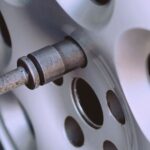
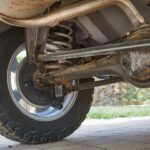

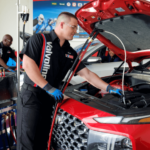


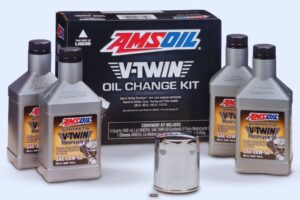

![Read more about the article How Much Is an Oil Change at Jiffy Lube [Service Costs]](https://roadsumo.com/wp-content/uploads/2021/10/how-much-is-an-oil-change-at-jiffy-lube-300x200.jpg)